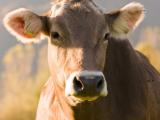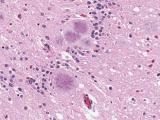Jun 8, 2004 (CIDRAP News) The US Department of Agriculture (USDA) says 1,127 cattle were tested in the first week of its expanded testing program for bovine spongiform encephalopathy (BSE) and were found free of the disease.
The USDA's Animal and Plant Health Inspection Service (APHIS) posted the test results on its Web site. Andrea McNally, an APHIS spokeswoman in Washington, DC, told CIDRAP News that plans call for posting the results every Monday. The expanded program began Jun 1.
The department plans to test more than 200,000 cattle over the next 12 to 18 months to determine how many more BSE cases, if any, exist in American herds. The decision to expand BSE testing followed the discovery of the nation's first BSE case in Washington state last December. About 20,000 cattle were tested last year.
The USDA has authorized 12 laboratories around the country to conduct rapid testing of cattle samples for BSE. But so far only five labs have been actively testing, according to McNally. The five labs are among the first seven the USDA said were authorized to run the tests; the other two labs haven't participated so far because of other priority projects, McNally said.
The five additional labs that the USDA has authorized to conduct tests will play more of a backup role, according to McNally. "At this point the ones we have up and running are more than sufficient for what we're doing," she said.
The USDA has said the testing will focus on cattle deemed at increased risk for BSE, including nonambulatory cattle, those with signs of central nervous system disease, emaciated and injured cattle, and cattle that die on farms. Plans also call for randomly testing about 20,000 healthy-appearing cattle over 30 months old.
McNally said she had no data yet on how many cattle from each of the above categories have been tested so far.
She said the rapid tests being used are highly sensitive, and any inconclusive results from those tests will trigger confirmatory testing at the National Veterinary Services Laboratory in Ames, Iowa. "We'd report any inconclusive results on the [Web] site and in addition to that we would do an announcement," she said.
An estimated 35 million cattle are slaughtered in the United States annually. USDA officials have said that testing 268,000 animals during the expanded surveillance program would make it possible to detect one case of BSE among 10 million cattle with 99% confidence.
See also:
Mar 30, 2004, CIDRAP News story, "Seven state labs to conduct BSE testing"
















